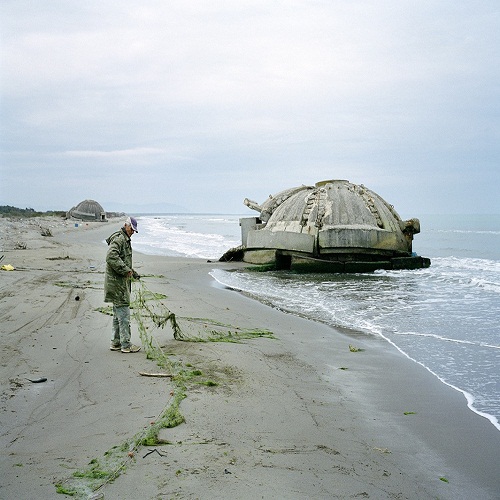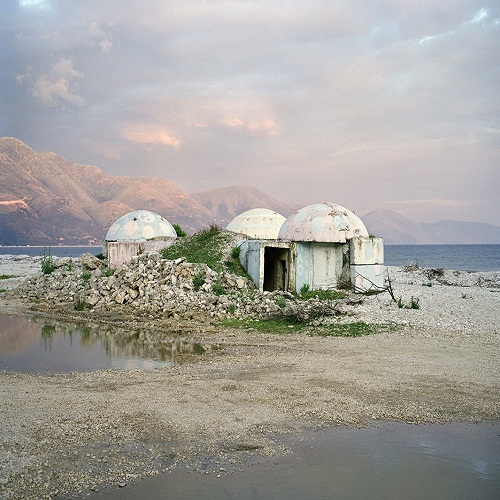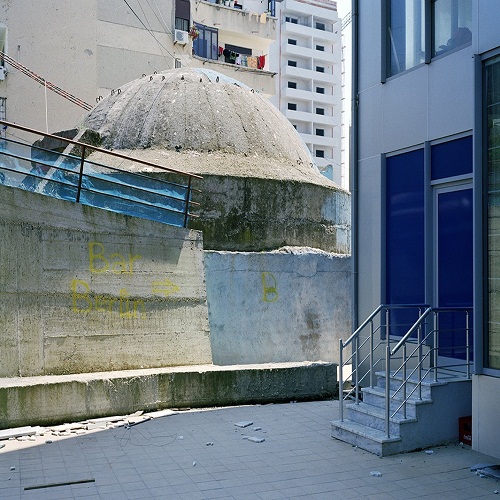
Albania is home to over 700,000 bunkers – one for every four Albanians. These bunkers are a legacy left by the Communist dictator of Albania, Enver Hoxha, and his 40-year rule.
The bunkers were built within the almost half-century rule of the Albanian dictator as part of his “bunkerisation” program with the purpose of being used should the country be attacked by enemy forces. However, no such situation occurred, albeit, the more than 700,000 above-ground bunkers scattered over the landscape of Albania present as a blunt reminder of Hoxha’s tyrannical reign.
Photographer David Galjaard learned of the mushroom-like bunkers of Albania from his friend while working on a series of Cold War tunnels in Netherlands. That was way back in 2008. Galjaard has made over three trips to the country ever since.
He made his first trip after doing initial research about the country and realized he needed to get to Albania to see for his own eyes the many bunkers of the place.
“The intention was to find out what the consequences of these bunkers are for the Albanian landscape, and what it meant for its people, their collective memory, to be continuously triggered by these pill boxes, being reminded of their fierce dictatorial past,” he said through email.
After his first trip, though, Galjaard again made another realization – the bunkers of Albania are dying to tell a different and more interesting story, a bigger scope than what he had initially in mind.
“In October 2009 I went back. During this trip I decided to use the bunkers as a metaphor for documenting a country in transition. At that point it became not a story about bunkers, but a story about the history, present and future of Albania,” he further commented.

Altogether, Galjaard made three trips to Albania within a two-year span spending over four months in the country for his bunker project. And seeing that the bunkers were not mapped, Galjaard used a small van to drive around the countryside in a random manner with the hope that he would eventually bump into a few of the bunkers’ locations. In areas where he cannot use his small van – like scaling up mountains or on the beaches – he walked by foot.
According to Galjaard, many of the bunkers are empty while others have been repurposed as animal sheds or storage rooms for hays. Others saw more creative uses: some locals made small shops and restaurants out of the above-ground dugouts. Galjaard even met a man who transformed one bunker into his tattoo studio. There is also a music festival in Albania which makes use of them.
However, many of the bunkers that did not saw use got weathered, at the mercy of the elements and others were destroyed for their iron.
Galjaard further added that Albanians have “mixed feelings” about the bunkers. Some locals look at them as monuments and like to keep them because of that while the others wanted them gone as they make working on the land difficult.
“Albanians are not interested in the bunkers. As one of the poorest countries in Europe they have more urgent matters to worry about. It’s the future they’re interested in, not the past,” Galjaard said.
Galjaard even recounted that foreigners visiting Albania often feel surprised when they find out about the existence of the bunkers and often make a pastime picking out the bunkers on the Albanian landscape through the duration of their stay.

And while Albanians have pretty interesting ideas on how to increase tourists’ interest in Albania by means of these bunkers, Galjaard pointed out that this area could always use a “room for innovation”.
“Once the economy of the country picks up a bit and more tourists visit, I think Albanians will have a clearer image of the potential of the bunkers as an touristic attraction. It is time that they are finally used to benefit the people,” Galjaard stated.
The photos David Galjaard took about the bunkers of Albania are compiled in the book Concresco.